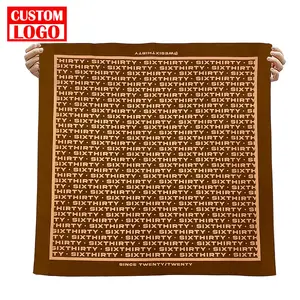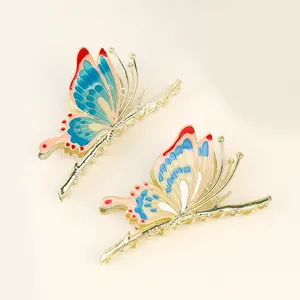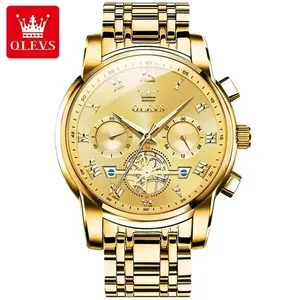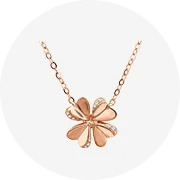Beliebt in Ihrer Branche




Großhandel benutzer definierte Designer einfach gedruckt quadratischen Tudung Bawal muslimischen Frauen Baumwolle Voile ethnischen Schals Schals Hijab
1,38 € - 1,89 €
Mindestbestellmenge: 10 Stück






Individuelles LOGO Kaschmir Winterschal warm weicher Pashmina-Ausschnitt Schals Imitation Wolle Schal Decke Damen Kleid Tassel für Damen
1,27 € - 2,79 €
Mindestbestellmenge: 50 Stück



BLEUT PHOENIX DAMNEN WINTERSCHAL 100 Wolle massives Hijab 2024 Musselin Dupatta Luxushaal Schals chiffon Großhandel
9,49 € - 9,59 €
Mindestbestellmenge: 300 Stück







100% Seiden schals Drucks ervice Designer Foulard en Soie Women Square Custom Seiden schal mit Logo
3,71 € - 4,64 €
Mindestbestellmenge: 30 Stück







Streifen übergroßer Schal Schal modisch einfaches Design Poncho Winter Damenmantel weiche Kaschmirdecke Winterschal
Sofort lieferbar
5,38 € - 6,23 €
Mindestbestellmenge: 10 Stück
Versand pro Stück: 7,62 €







Manufaktur ODM warm und weich mehrfach kariert schwer gebürstet Fuzzy Winters chals Pashmina Polyester Kaschmir Schal mit Quaste
2,82 € - 3,15 €
Mindestbestellmenge: 2 Beutel







Designer ethnische batik wolle kaschmir kopf schal khimar baumwolle hijab plangi quaste pashminas schals für musselin frauen mode
2,23 € - 2,88 €
Mindestbestellmenge: 10 Stück



High Fashion Classic Ethnische Indische Hands tickerei Kaschmir Woll schals von Jaipur Bunter hand bestickter Woll schal
18,61 € - 23,26 €
Mindestbestellmenge: 25 Stück






100 % Reine Wolle weichstes einfarbiges Marineblaues Pashmina-Schal ethnische Schals für Damen und Herren Made in India Großhandelspreis Pantone-Farben
10,24 € - 12,56 €
Mindestbestellmenge: 500 Stück






Trendy Damen Woll schal mit hochwertigem besticktem Woll schal im ethnischen Herbst-und Winters til
Sofort lieferbar
21,40 € - 24,19 €
Mindestbestellmenge: 5 Stück
Versand pro Stück: 4,61 €






OEM neuesten ethnischen Woll schals andere Schals & Schals Damen Poncho
31,63 € - 50,23 €
Mindestbestellmenge: 50 Stück






Schwere Stickerei Mode bedruckte Winter-Kashmir-Schale Pashmina kunstvoll gestrickt lange ethnische Samtwolle Überwäsche bedruckte Schale
3,72 € - 7,33 €
Mindestbestellmenge: 50 Stück
Ähnliche Suchanfrage:
kashmir woll schalsgroße woll schalsschals reine wolledicke woll schalsgekochte wolle schals indienwolle schals indiagroßhandel indische wolle schalswolle schals aus pakistanschwarze woll schalsneue woll schalsseiden schals aus wolle indienindische reine wolle schalsgroßhandel seiden schalsdigital bedruckte schals aus wolleneue mode wolle schals






Winter kaschmir ethnische schals schals gekennzeichnet unisex grün rot kariert kunstpelz wolle weihnachten quaste schal für damen stilvoll
Sofort lieferbar
0,7906 € - 1,02 €
Mindestbestellmenge: 8 Stück
Versand pro Stück: 3,01 €






Premium Qualität Narzisse Wolle Streifen Stolen Kullu Schals aus gestricktem Wollstoff für Frauen Kleidung Ethnische Schals und Schals
16,75 € - 46,51 €
Mindestbestellmenge: 2 Stück






Hochwertiger indischer kaschmirischer paschminischer ethnischer Frauen-Schal Wolle Schal handgefertigt Stein Perlen lange Wolle Schals Schalen
7,45 € - 12,10 €
Mindestbestellmenge: 12 Stück






2023 Ethnische neue Winter kollektion Klassischer Schal aus massiver Wolle für Männer Kunden spezifische leere Merino-Woll schals für Männer
8,38 € - 11,17 €
Mindestbestellmenge: 10 Stück






Ethnischer Stil Cape Winter Big Schal Schal Wolle Mode Pullover Poncho Frauen Mehrfarbige Stricks chals
Sofort lieferbar
3,54 € - 4,66 €
Mindestbestellmenge: 10 Stück
Versand pro Stück: 3,54 €






Großhandel Winter einfarbige Wolle Kaschmir Schal Pashmina Schals Ethnische Khimar Kopf Luxus Designer Schals für muslimische Frauen
15,82 € - 18,61 €
Mindestbestellmenge: 10 Stück






Herbst Innere Mongolei Gekochte Wolle Stil Multifunktion Großer Schal Mittlere Dicke Ethnischer Stil Bedruckter Schal
Sofort lieferbar
26,05 € - 28,84 €
Mindestbestellmenge: 25 Stück
Versand pro Stück: 1,41 €






Jungen Mädchen INS Kleine Blume Gestrickte Wolle Kinder schal Herbst und Winter Warmer Schal Ethnische Schals Schals
Sofort lieferbar
0,8278 € - 2,13 €
Mindestbestellmenge: 12 Stück
Versand pro Stück: 3,65 €






Großhandel Hochwertige mehrfarbige Wolle Keffiyeh Arabisch Shemagh Schal Ethnische Schals und Schals
Sofort lieferbar
4,66 € - 7,45 €
Mindestbestellmenge: 24 Paar
Versand pro Stück: 1,86 €






Großhandel Vintage Maul beers eide Wolle gemischt Hijab Schals bestickt Seiden schal Blumen Erwachsenen Neuheit ethnischen muslimischen Schals
Sofort lieferbar
5,40 € - 5,77 €
Mindestbestellmenge: 2 Stück
Versand pro Stück: 3,34 €






Tippet im traditionellen Stil Frühling Herbst Winter Schal im ethnischen Stil Einzigartiger Woll schal
Sofort lieferbar
3,87 € - 4,18 €
Mindestbestellmenge: 10 Stück
Versand pro Stück: 5,46 €






2023 Ethnische neue Winter kollektion Klassischer Schal aus massiver Wolle für Männer
8,38 € - 15,82 €
Mindestbestellmenge: 20 Stück






Großhandel benutzer definierte Luxus Muster und Logo Winter Wolle Schal Schal für Frauen Hijab ethnischen Pashmina Schals Schals
Sofort lieferbar
3,73 € - 4,47 €
Mindestbestellmenge: 10 Stück
Versand pro Stück: 3,73 €






2022 hochwertige Stickerei Stolen Damen Woll schals ethnische Schals russischer Blumen schal Hijab Großhandel Blumen schal
4,52 € - 5,08 €
Mindestbestellmenge: 10 Stück






Lagerlots herren warme Wollschals tragbarer peruanischer ethnischer Schal innovative individuelle Schals
1,86 € - 2,80 €
Mindestbestellmenge: 49 Stück





Neue Mode warmen ethnischen Stil Woll kragen gestrickt Quaste Schal Umhang warm Outdoor Damen Weste Strickjacke Bluse
Sofort lieferbar
3,73 € - 6,52 €
Mindestbestellmenge: 2 Stück
Versand pro Stück: 17,44 €



Großhandel klassische ethnische indische Hands tickerei Kaschmir Wolle Schals Frauen langen Kaschmir Schal Schal
16,96 €
Mindestbestellmenge: 10 Stück






W0023 Neue Frauen Mode andere ethnische Schals Pelz schals Winter Wolle gewebte Ärmel Schal beheizt arabischen Schal
Sofort lieferbar
10,23 € - 13,95 €
Mindestbestellmenge: 2 Stück
Versand pro Stück: 51,63 €






Nepal esische exquisite Ginkgo blatts tickerei, großer roter Hochzeits schal aus Kaschmir wolle, chinesischer Schal im ethnischen Stil für den doppelten Gebrauch
Sofort lieferbar
4,56 € - 4,75 €
Mindestbestellmenge: 2 Stück
Versand pro Stück: 9,85 €



Großhandel Vintage Kantha Seiden schal Wende schal Reiner Seiden schal Hijab Schal Stola Indische Frauen Lang Bestickt
4,65 € - 9,30 €
Mindestbestellmenge: 2 Stück






BLUE PHOENIX Mode gestrickt Poncho Schal Schal Wolle türkische Hijab Frauen Hijab Schal Frau Herren Schals und Schals
9,03 € - 9,12 €
Mindestbestellmenge: 200 Stück




Rabari Bestickter Woll schal-Ethnischer Kutch Rabari Schal-Banjara Rabari Sticks chal
93,02 € - 139,52 €
Mindestbestellmenge: 10 Stück







Großhandel Mode Pashmina Bestickter Schal Frauen Schal Niedriger Preis Großhandel Neues Design 2024 Neue Winters chals Für Frauen
3,63 € - 5,12 €
Mindestbestellmenge: 10 Stück






Benutzer definierte Logo Alpaka Merino Männer 100% Wolle Schal für Frauen Sublimation Schule warmen Winter große reine Kaschmir Wolle Schals Schal
Sofort lieferbar
7,63 € - 9,12 €
Mindestbestellmenge: 1 Stück
Versand pro Stück: 14,45 €


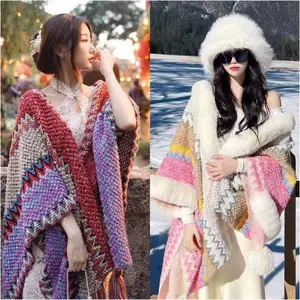



Hochwertige ethnische Winds chal Kaschmir Poncho Schals Gestrickte Vertuschung mit Quaste Dicke Cape Decke Bereit zum Versand Winter wolle
3,41 € - 5,95 €
Mindestbestellmenge: 2 Stück






Chiffon bedruckter Schal Lady Blumenmuster Schal Frauen Ethnische Schals Hijab Schal Erwachsene Frauen/Damen/Damen/Mädchen, Frauen
Sofort lieferbar
1,95 € - 2,69 €
Mindestbestellmenge: 10 Stück
Versand pro Stück: 3,82 €






Exquisit detaillierte und elegante Handarbeit Stolen/Schals, hergestellt in Indien in einer Vielzahl von floralen Themen auf Wollstoff
56,74 €
Mindestbestellmenge: 10 Stück
Top-Kategorien
Über ethnische wolle schals
Alibaba.com bietet 991 ethnische wolle schals Produkte an. Eine Vielzahl von ethnische wolle schals-Optionen stehen Ihnen zur Verfügung, wie z. B. hijab schal, frauen hijab, und frauen schal. Sie können auch zwischen geometrische, tier, und gestreiften ethnische wolle schals wählen. Sowie zwischen europäischen, klassische, und elegante ethnische wolle schals. Und egal, ob ethnische wolle schals gemischt, multi farben , oder multicolor ist.
